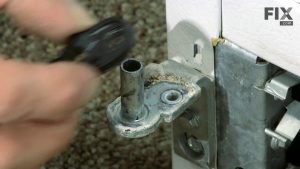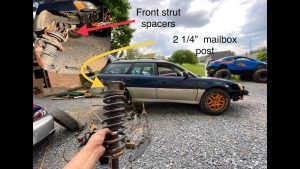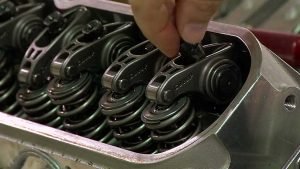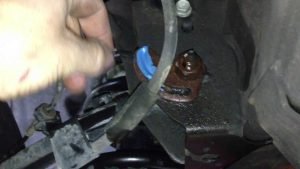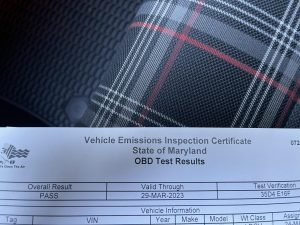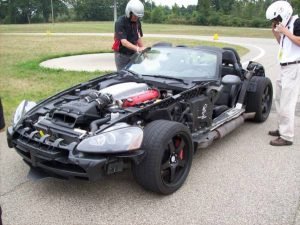
Back Up Safely: A Comprehensive Guide to Installing a Rearview Camera
Driving has become significantly safer with the advent of rearview cameras. These vital safety features provide a clear view of what’s behind your vehicle, minimizing the risk of accidents, especially when backing up in tight spaces or with limited visibility. While professional installation is always an option, many DIY enthusiasts find installing a rearview camera a manageable task. This guide provides a step-by-step approach to help you achieve a successful installation.
🛒 Recommended Product
Before You Begin: Preparation is Key
Before you even touch a tool, thorough preparation is crucial. This will make the installation process smoother and less frustrating.
-
Consult your vehicle’s manual: This is the most important step. Your car’s manual will provide valuable information on wiring diagrams, location of relevant components (like the reverse light), and potential challenges specific to your model. Ignoring this step can lead to damaged wires or incorrect installation.
-
Gather your tools: You’ll likely need basic tools like screwdrivers (Phillips and flathead), wire strippers/cutters, electrical tape, a drill (potentially), and possibly a multimeter for testing electrical connections.
-
Choose your installation location: Select a spot for the camera that provides a clear and unobstructed view of the area behind your vehicle. Consider factors like license plate placement and potential obstructions. Avoid placing it too low, as this will obstruct the view of the ground close to the bumper.
-
Plan your wiring route: Carefully plan the path the wiring will take from the camera to the screen (usually inside the car). Try to keep the wires hidden and protected from potential damage. Consider using wire loom or cable ties to keep everything organized.
Step-by-Step Installation Guide
-
Mount the camera: Carefully attach the camera to your chosen location. This usually involves drilling holes (if necessary) and securely fastening it using the included mounting hardware. Ensure the camera is level and pointed straight back.
-
Run the wiring: This is often the most challenging part. Gently and carefully route the wiring from the camera to the interior of your vehicle. Use existing pathways or gaps to minimize the visibility of the wiring. Secure the wires using cable ties to prevent them from dangling or getting caught.
-
Connect the power: This is where consulting your vehicle’s manual is particularly vital. Connect the camera’s power wire to the reverse light circuit. This ensures the camera only activates when you put your car in reverse. You’ll typically find the reverse light wire near the tail light assembly. Always disconnect the car’s battery before working with electrical connections to avoid short circuits.
-
Connect the video cable: Connect the video output cable from the camera to the input of your monitor or head unit. This will vary based on your specific system. Refer to the instructions that came with your camera and display unit.
-
Test the camera: Reconnect the car battery. Turn on the car and shift it into reverse. You should see the image from the camera on your display. If not, carefully check all connections.
-
Secure the wiring: Once everything is working, secure all the wires and connections. Use cable ties and electrical tape to ensure a neat and safe installation.
Common Mistakes to Avoid
-
Improper wiring: Incorrectly wiring the camera can damage your vehicle’s electrical system or render the camera inoperable. Always double-check your connections and consult your vehicle’s manual.
-
Poor camera placement: A poorly placed camera will provide a limited or obstructed view. Choose a location that provides maximum visibility.
-
Neglecting wire protection: Exposed wires can easily be damaged. Protect your wiring using cable ties, wire loom, or other protective measures.
-
Ignoring the manual: This is perhaps the biggest mistake. Your vehicle’s manual and the instructions that came with your camera are essential for a successful and safe installation.
By carefully following these steps and avoiding common pitfalls, you can successfully install a rearview camera and significantly enhance your car’s safety. Remember, safety is paramount, so if you are uncomfortable with any part of this process, it is always best to consult a professional.
🛒 Recommended Product
FAQ
Q. What tools will I need to install a rearview camera?
A. You’ll need a basic set of tools, including a drill with appropriate drill bits (for drilling holes if necessary), wire strippers/crimpers, electrical tape, a multimeter (to check voltage), possibly a soldering iron (depending on your camera and vehicle’s wiring), and some zip ties or velcro straps for securing wires. You may also need a plastic trim removal tool to avoid damaging your car’s interior panels. The specific tools will depend on the chosen camera and your car’s make and model.
Q. Where is the best location to mount the rearview camera?
A. The optimal location is generally centered on the rear of your vehicle, slightly above the license plate, providing a clear, unobstructed view. However, the best location will depend on your vehicle’s specific design and the camera’s field of view. Avoid mounting it in areas susceptible to dirt, mud, or water buildup.
Q. How do I connect the camera to my car’s existing wiring?
A. This is arguably the most challenging part. You’ll need to find a suitable power source (typically from the reverse lights) and a ground wire. You’ll then need to connect the camera’s video output cable to the input of your in-dash screen or a compatible aftermarket head unit. Consult your camera’s instructions and your vehicle’s wiring diagram for precise guidance. Improper wiring can damage your vehicle’s electrical system, so proceed with caution, or seek professional help if unsure.
Q. How do I run the wiring from the camera to the head unit?
A. Running the wiring requires careful planning. You’ll typically want to route the wires along existing trim panels and channels to keep them hidden and protected. This often involves removing interior panels (refer to your car’s manual or online resources for guidance). Secure the wires neatly using zip ties or velcro straps, ensuring they don’t interfere with any moving parts.
Q. What if my car doesn’t have a built-in screen for a rearview camera?
A. You’ll need to purchase an aftermarket head unit or a standalone monitor designed for rearview cameras. These can be integrated into your dashboard or mounted elsewhere in the car. Make sure the chosen monitor is compatible with your chosen camera’s video output.
Q. What are the legal requirements for installing a rearview camera?
A. Legal requirements vary by region. While many places don’t specifically regulate aftermarket camera installations, ensure the camera doesn’t obstruct your rearview mirror or impede your driving vision. It’s always best to check your local vehicle regulations.
Q. Can I install a rearview camera myself, or should I hire a professional?
A. While many individuals successfully install rearview cameras themselves, it requires some technical aptitude and patience. If you’re uncomfortable working with car wiring or are unsure about any aspect of the installation, it’s best to seek professional help from an auto electrician or car audio specialist to avoid potential damage to your vehicle’s electrical system.
Related Articles
how to maintain a car battery in cold weather
Keeping Your Car Battery Happy in the Cold: A Winter Survival Guide Winter’s chill can be tough on your car, and your battery is particularly vu…
Ceramic Coating vs. Wax: Which Protects Your Car Better in 2025?
Ceramic Coating vs. Wax: Which Protects Your Car Better in 2025? Recommended Product: Titanium Ceramic Wax Cream, 2025 Strong Protection Car Coating P…
Exploring the Differences – Limited Slip vs Posi Traction – Which is Right for Your Car?
Introduction When it comes to enhancing your car’s performance and handling, the choice between Limited Slip and Posi Traction differentials is …
Affiliate Disclosure: As an Amazon Associate, I earn from qualifying purchases made through links on this site.

